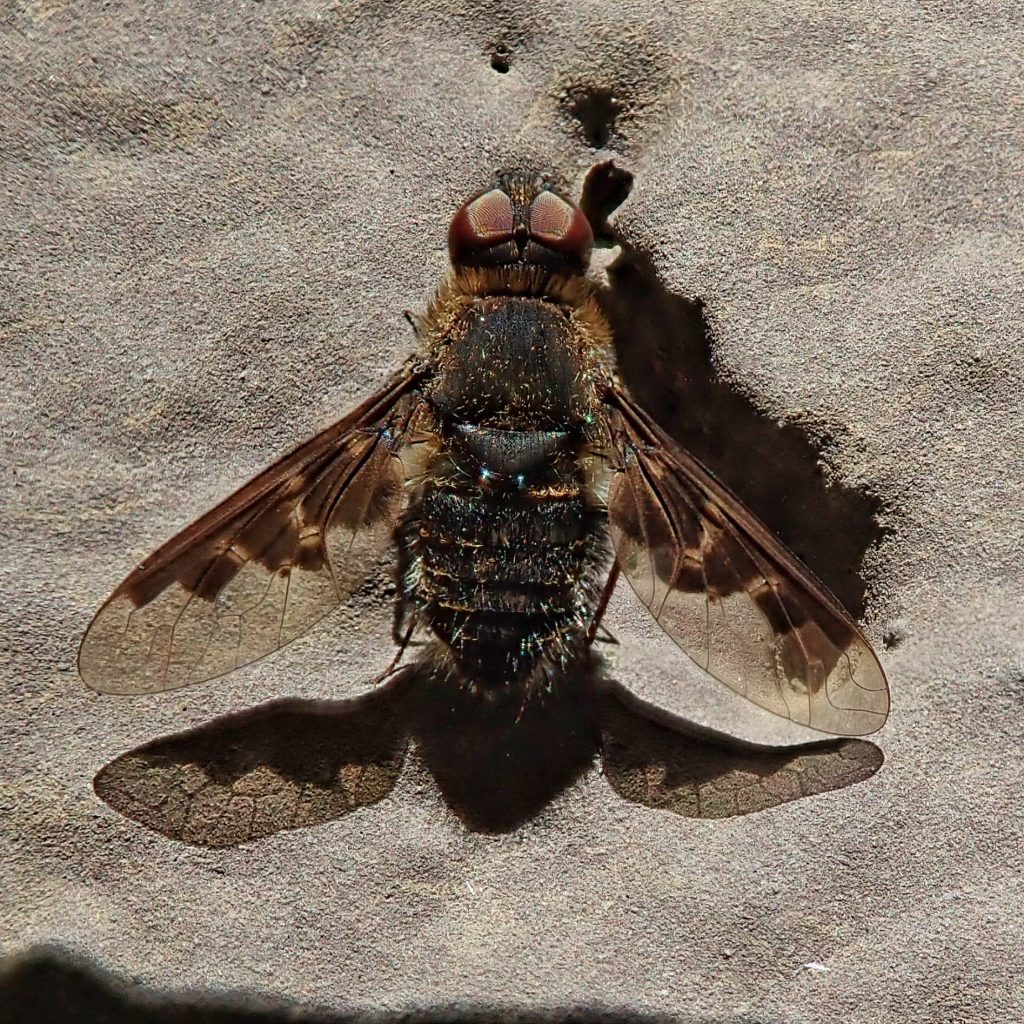
Yesterday was very hot in the PNW (all time records falling everywhere; and today is forecast to be hotter), so I was camped out in an air conditioned room most of the day doing research. But by late afternoon I was restless, and decided to walk over to the cemetery, which is the only decent ‘habitat’ within easy walking distance of our apartment, just to see what record breaking heat felt like. And, of course, it felt HOT! But it was also a productive time because there were several insects on the shaded walls of the maintainence building in the middle of the cemetery, the most exciting of which was this bee fly (family Bombyliidae), Hemipenthes morioides. When it allowed me to approach close enough for good photos, and I noticed how distinct the wing pattern was, I thought there would be a good chance I could positively identify it. And this proved to be the case, once I finally figured out how this unaccredited and unaffiliated recreational naturalist could access the outstanding revision of, and key to (Ávalos-Hernández; 2009), the species of the genus Hemipenthes.
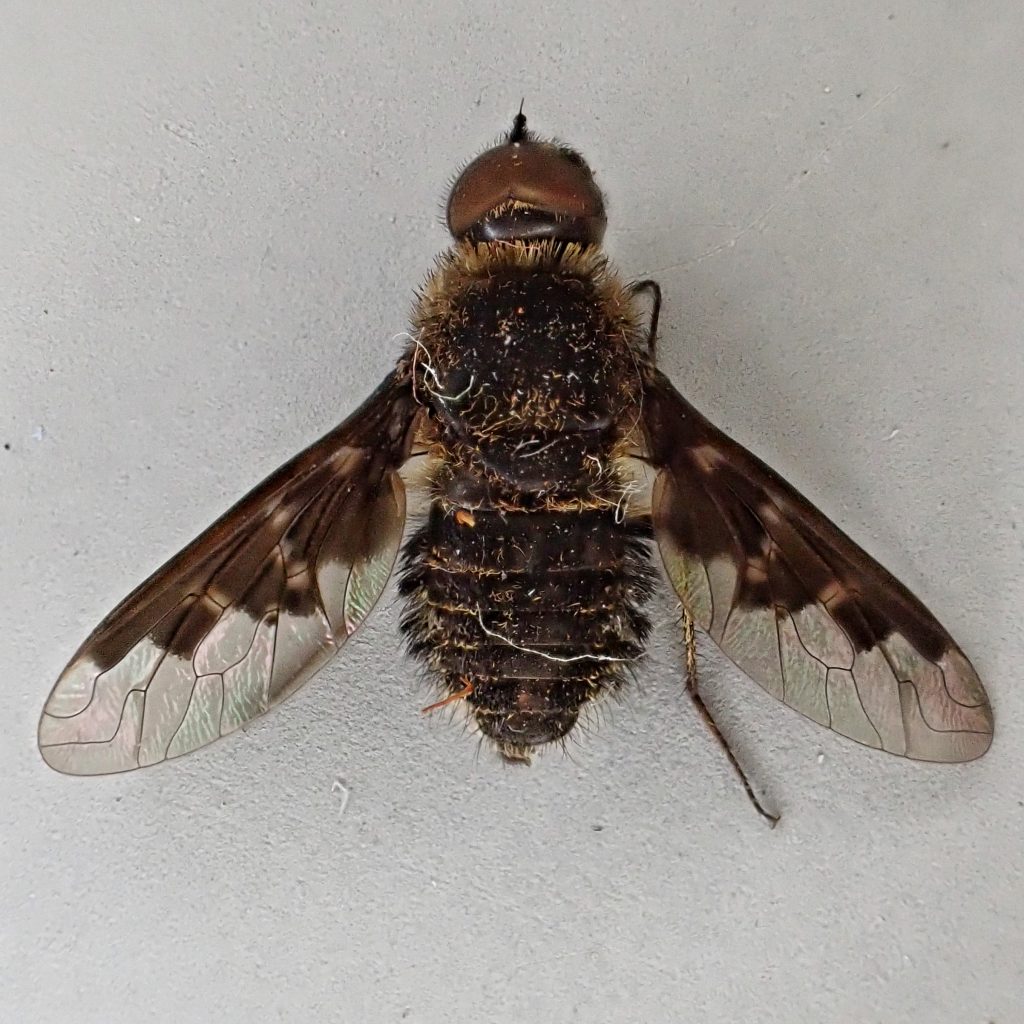
Bombyliidae larvae in general parasitize larvae of other species. Some genera accomplish this by weighting their eggs with sand, or other debris, and flinging them near the burrow of a solitary bee or wasp. After hatching, the bee fly larvae crawls to the host and slowly consumes it. But Hemipenthes are hyperparasites (also known as secondary parasites), which means they parasitize the larvae of something which has parasitized the larvae of something else.
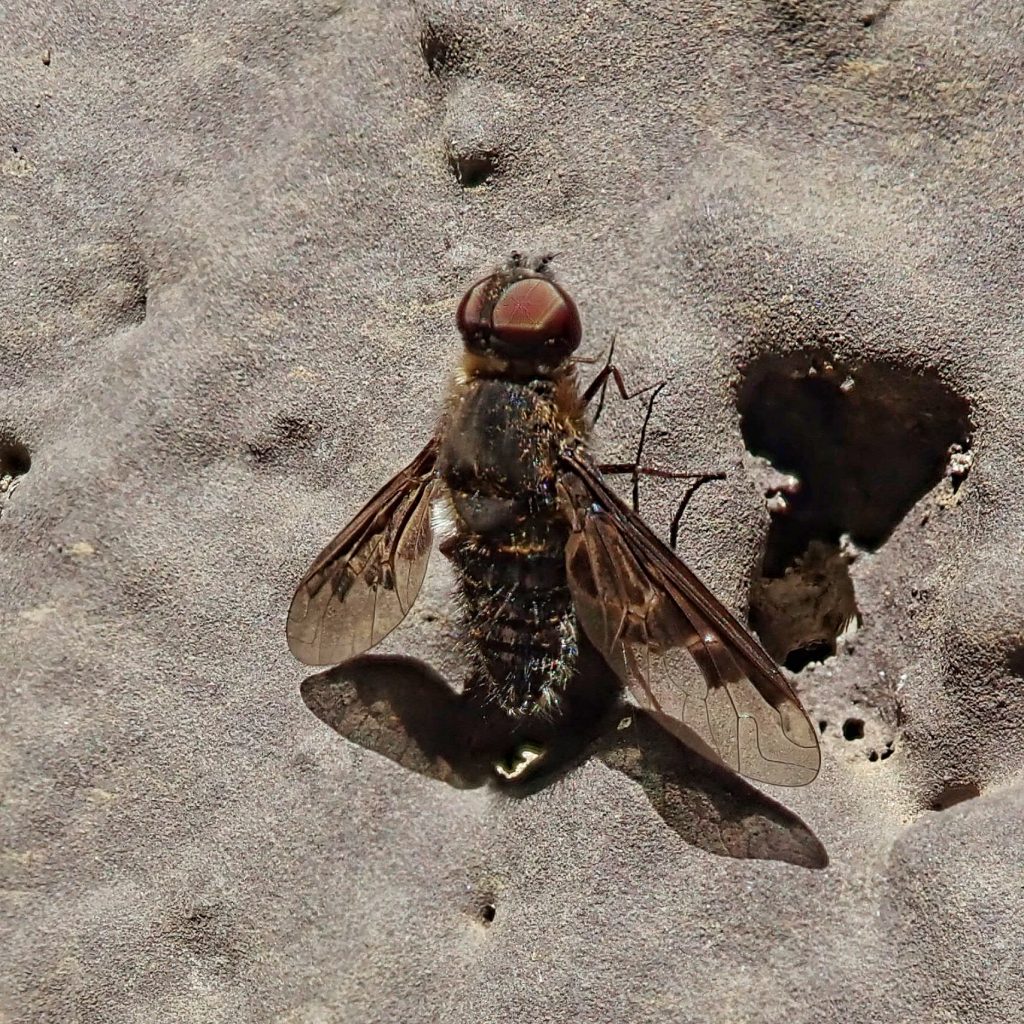
In the case of Hemipenthes morioides it seems that the only known relationship is one wherein the bee fly is a predator upon the larvae of the tachinid fly Bessa harveyi, which is a parasitoid of sawflies in the genus Pristiphora. But other members of Hemipenthes are known to attack ichneumon wasps in the genera Ophion and Branchus (which are known to utilize Lepidoptera as larval hosts), so it seems likely that, in addition to tachinid flies, some wasps are also exploited.
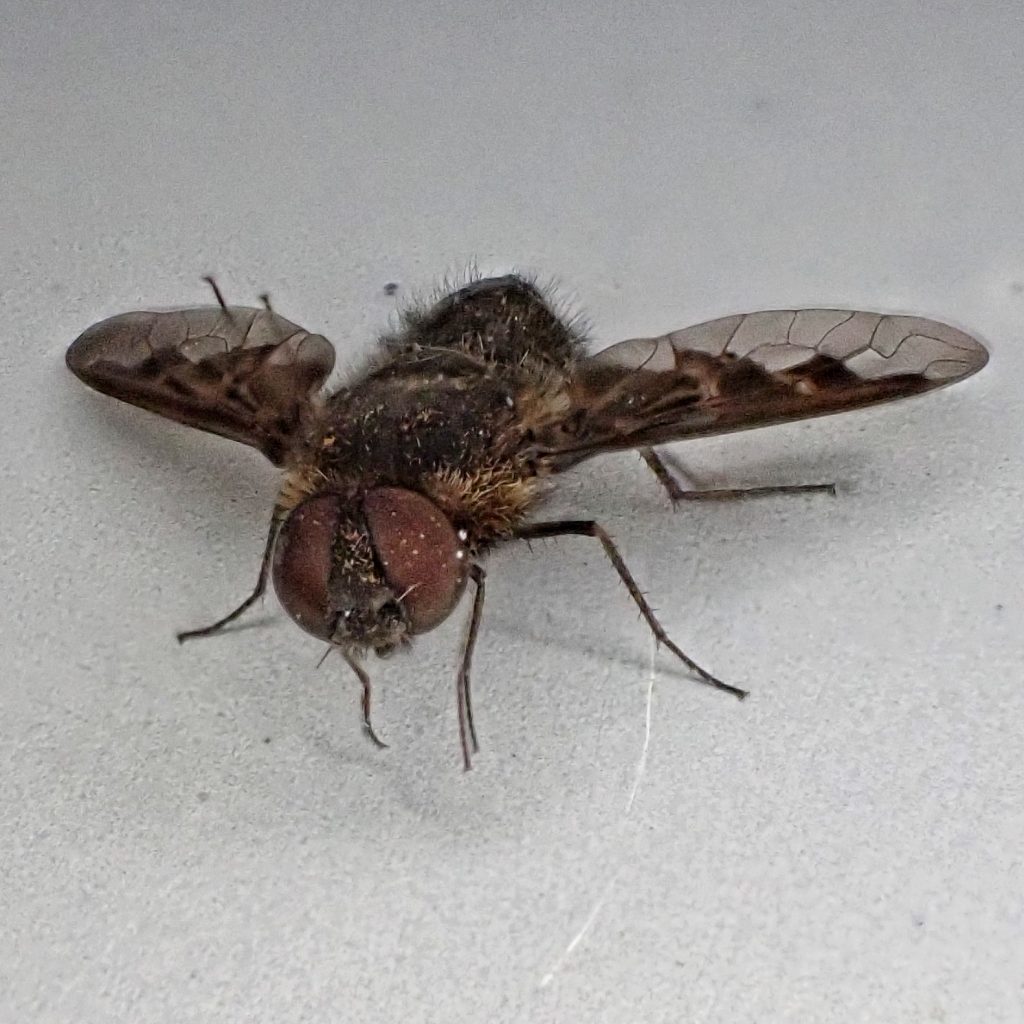
I wasn’t able to find any definitive information about how this is accomplished. At what point does the bee fly larvae first attack its host? Is it when the tachinid or ichneumonid larvae are still feeding, or searching for a location to pupate, or when they are in the puparium? Are the eggs laid before the host has finished dining on its host? Are they flung towards a potential host? Timing and mechanics questions abound, and I don’t know whether I simply can’t find the information, or whether these are things nobody really know. The complicated lives of insects are pretty fascinating stuff, but it takes time and dedicated researchers to plumb their depths.
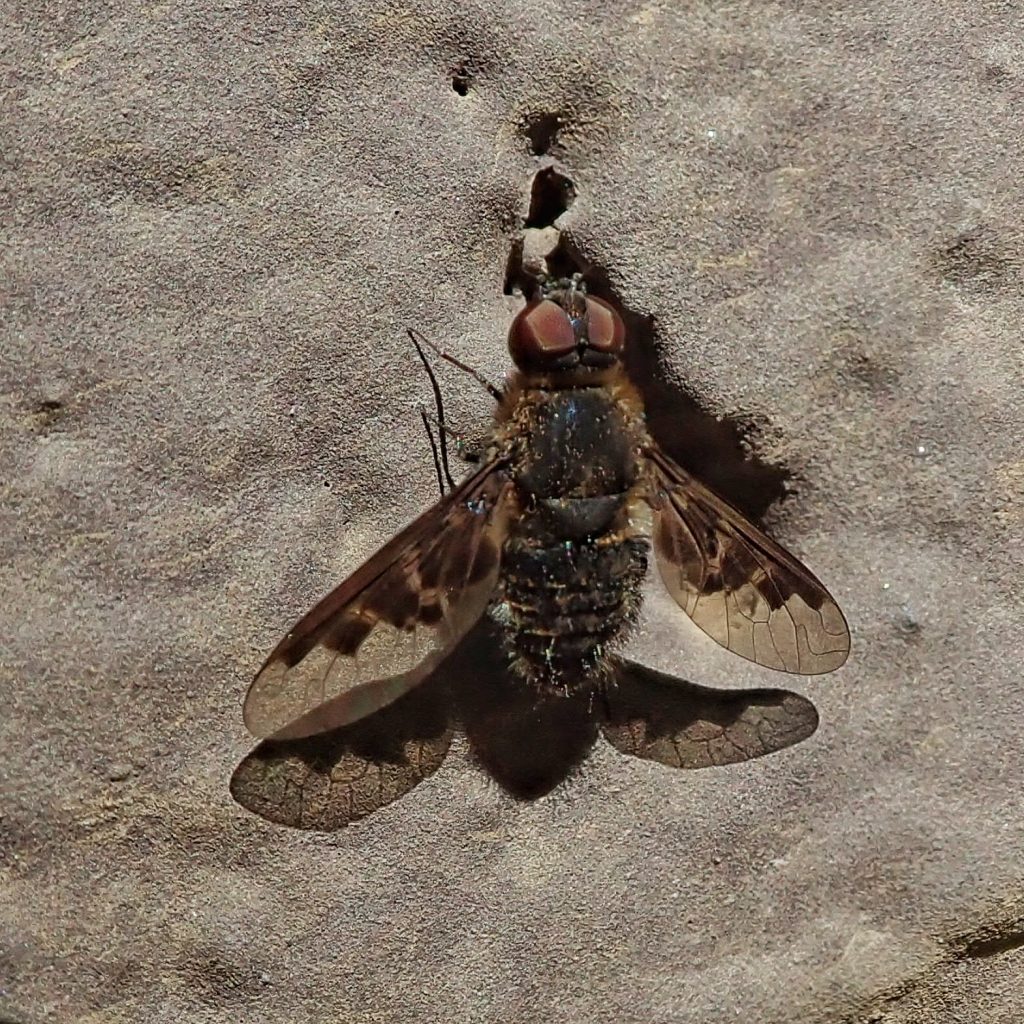
Description-Medium sized (5-10mm- this one was 8.5mm) moderately fuzzy brown fly, with intricate dark markings on the forward half of the wing; wings are held at an angle in typical bee fly fashion, but the proboscis doesn’t extend much past the mouthparts; has hyaline areas at various cross veins;
Similar species-All of the Hemipenthes are very similar; clear photos or a specimen in hand, and a key (like this one here) are required to distinguish among them; Bombylius spp. have much longer proboscis; other bee flies have wings that are clear or are more blotchy, and/or less uniform body coloration.

Habitat– Forest edges and fields.
Range-Northern North America; possibly region wide in the PNW, but there is confusion over taxonomy; may be more common east of the Cascades.
Eats-Larval hosts include larvae of tachinid flies and possibly ichneumon wasps. Adults feed on nectar.
Eaten by– Probably any insectivore which can subdue them.
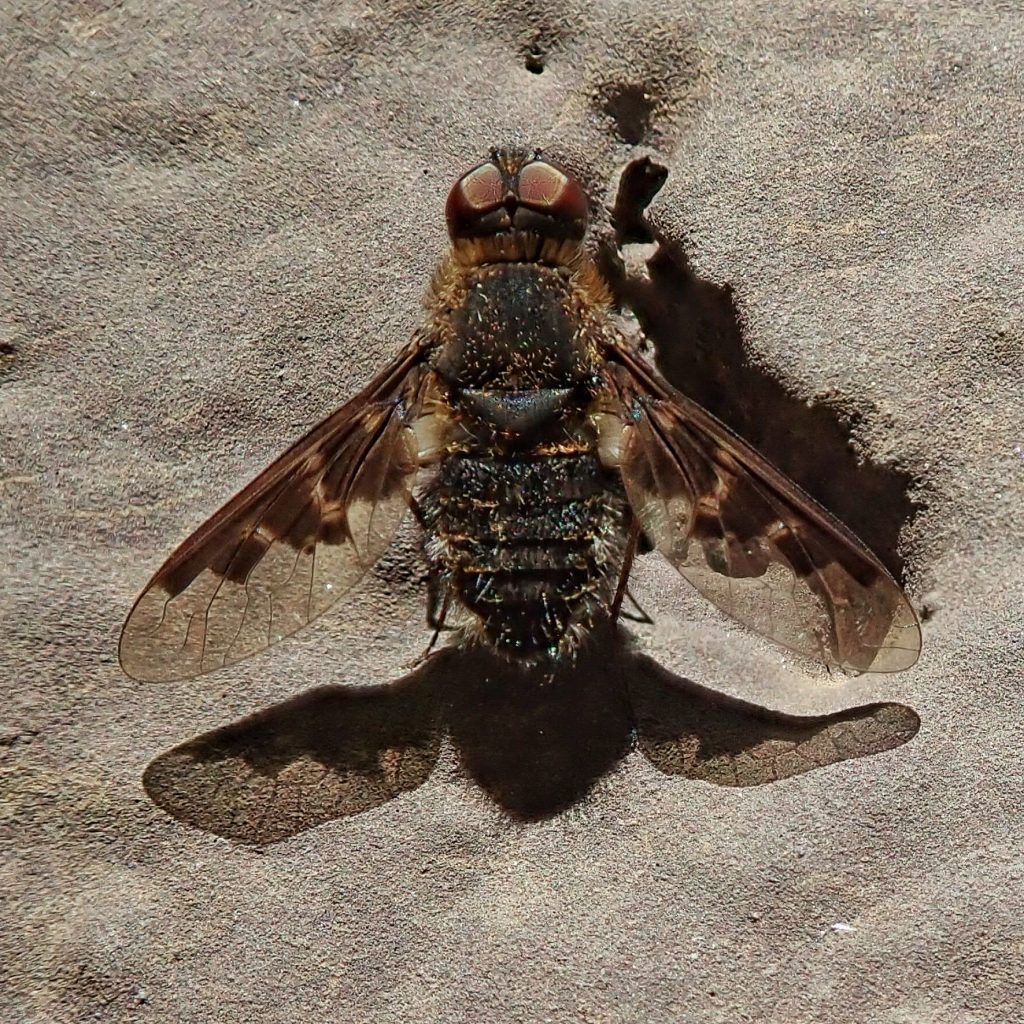
Reproduction-Hyperparasite; I cannot find much about the life history.
Adults active-May to August in our region
Etymology of names–Hemipenthes comes from the Greek for‘half a black (mourning) veil’, referring to the black and hyaline pattern on the wings. The specific epithet morioides means ‘like mori’, and refers to the similarity of the two species.
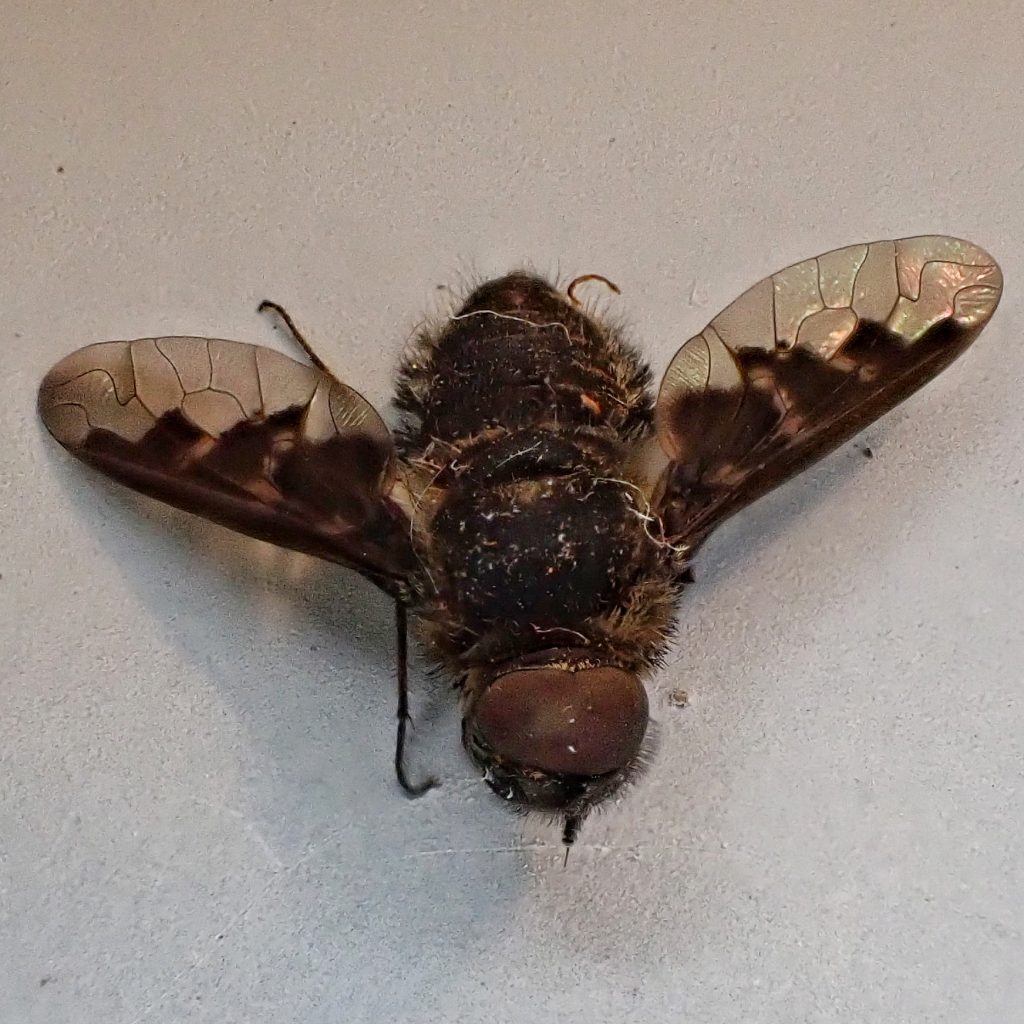
https://bugguide.net/node/view/365221
The link for the key, which is in Omar Avalos-Hernandez’s paper, did not work. Instead, copy and paste the name of the article into google scholar and you should get a link to Zootaxa that does work, although it may be only temporary;
A review of the North American species of Hemipenthes Loew, 1869 (Diptera: Bombyliidae) OMAR ÁVALOS-HERNÁNDEZ
https://www.inaturalist.org/guide_taxa/397551
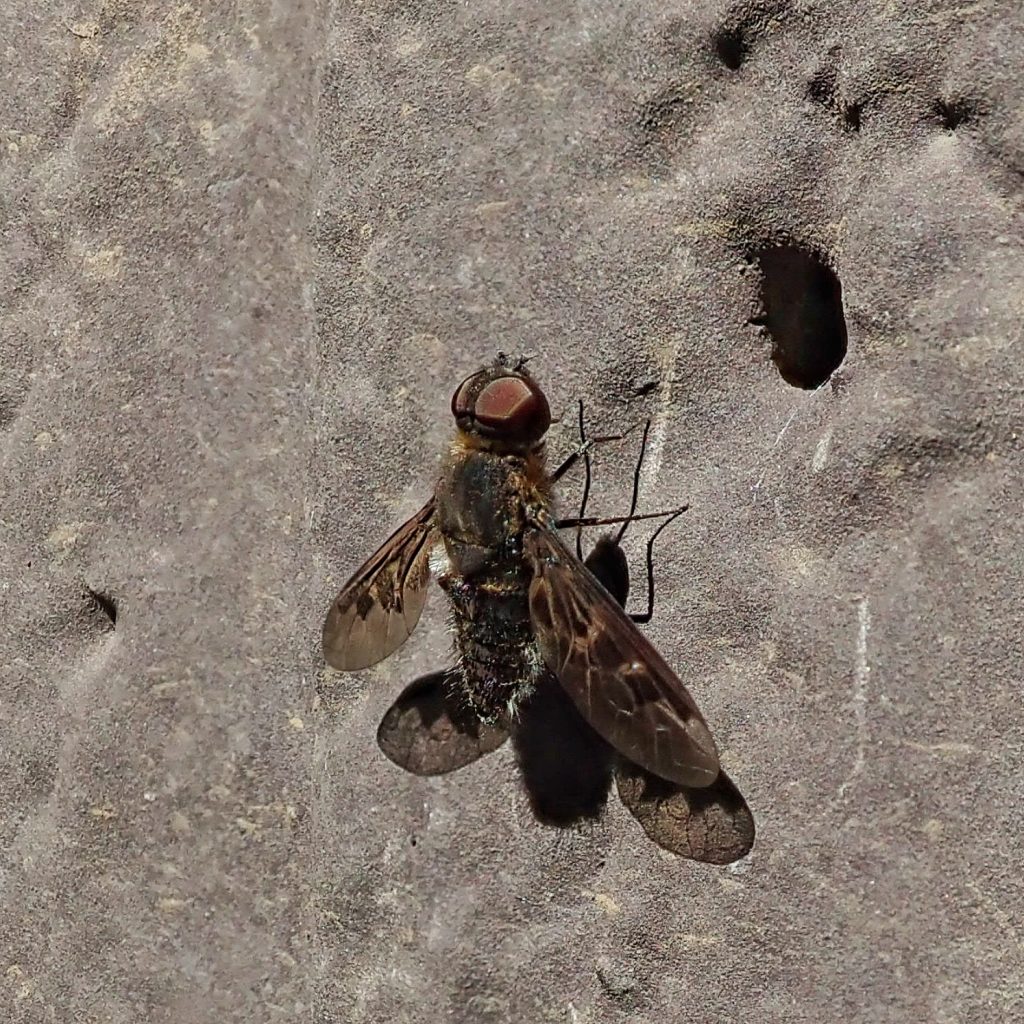
Very interesting profile! Thank you ☺️